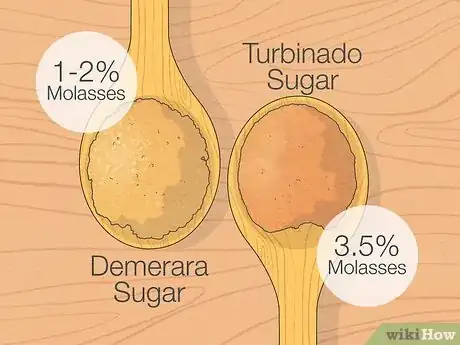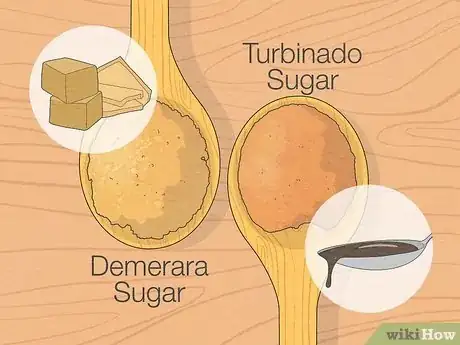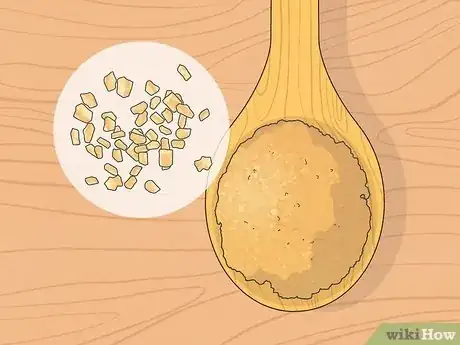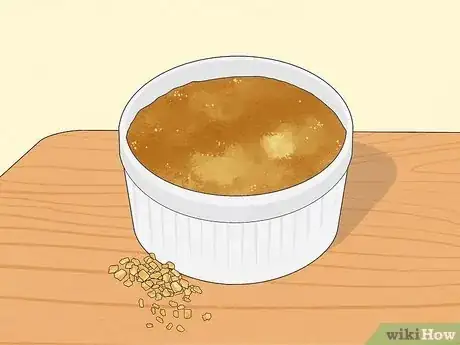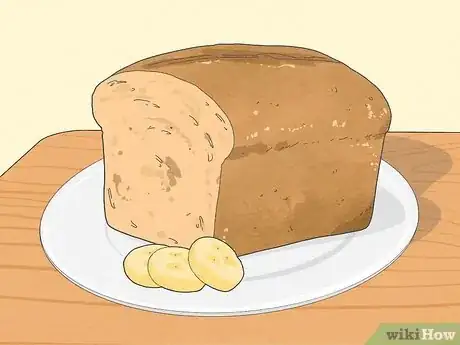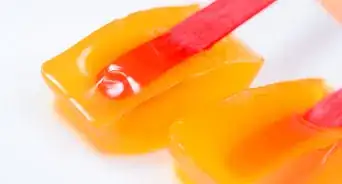This article was co-authored by wikiHow Staff. Our trained team of editors and researchers validate articles for accuracy and comprehensiveness. wikiHow's Content Management Team carefully monitors the work from our editorial staff to ensure that each article is backed by trusted research and meets our high quality standards.
There are 11 references cited in this article, which can be found at the bottom of the page.
Learn more...
While all sugars provide sweetness, some work better in certain recipes than others. Demerara and turbinado sugar are popular alternatives to white sugar, but it can be tricky to decide which one to choose. They look extremely similar, and they’re both raw sugars. However, there are several key differences to distinguish one from the other. If you’re unsure when to use demerara or turbinado, keep reading to learn more about their unique qualities and uses in the kitchen.
Things You Should Know
- Turbinado sugar contains more molasses than demerara, giving it a warm, smoky flavor. Demerara has a toffee, caramel-like taste.
- Turbinado sugar is an excellent replacement for granulated white sugar in most recipes, while demerara is mainly used as a topping in baked goods.
- Demerara has larger sugar crystals than turbinado, so it doesn’t dissolve easily in batters or doughs. Use brown sugar or maple syrup as a replacement for turbinado.
Steps
References
- ↑ https://www.lionsdeal.com/blog/guide-demerara-brown-sugar-varieties
- ↑ https://foodinsight.org/what-is-raw-sugar
- ↑ https://youtu.be/3sBiPH07yRo?t=494
- ↑ https://cocktailwonk.com/2022/09/demerara-sugar-and-syrup.html
- ↑ https://www.sugarnutritionresource.org/news-articles/what-are-the-different-types-of-sugars
- ↑ https://foodinsight.org/what-is-raw-sugar
- ↑ https://www.sugar.org/sugar/types
- ↑ https://scalar.usc.edu/works/the-voyages-of-the-clarence/demerara-sugar-production
- ↑ https://scalar.usc.edu/works/the-voyages-of-the-clarence/demerara-sugar-production
